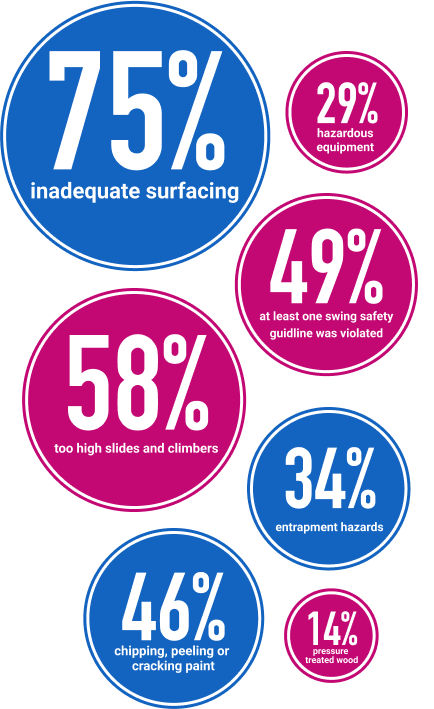Playground safety audits are performed by a Certified Playground Safety Inspector (CPSI) to ensure that playground equipment meets current safety standards. The sole purpose of these safety audits is to identify any possible non-conforming designs and products, environmental conditions and installation problems that could develop or become long-term hazards to children. CPSls are trained to audit equipment based on current CPSC guidelines and ASTM standards, which are known as the prevailing standard of care for commercial playgrounds.
No hazardous protrusions should be present on any equipment or surfacing that can increase risk of accidents and injuries. Protrusion gauges are used during safety audits to determine whether any protrusions present are within acceptable limits.
Ensuring that there are no traffic conflicts present, potential hazards from water, adjacent roads, bicycle paths or sports fields. Equipment should be properly spaced out according to safety/use zones, and fall zones should not be too small in order to prevent serious injury.
Making sure that the protective surfacing is at the appropriate height to the equipment used on the site.
Head, torso and neck probes are used by an inspector to assess entrapment risk.
A playground safety audit is a one-time process, whereas something like a maintenance inspection is different in terms of frequency and conducted at regular intervals, and focuses on immediate hazards caused by damaged or aging equipment - e.g., rusted playground decks, missing or worn parts, etc.
During these audits, hazards are both recognized and then categorized by their potential for causing severe injury. When the results are finalized it should help you determine what hazards require immediate attention, which ones should follow afterwards, and which ones are minor enough to fix as time and money permit.
